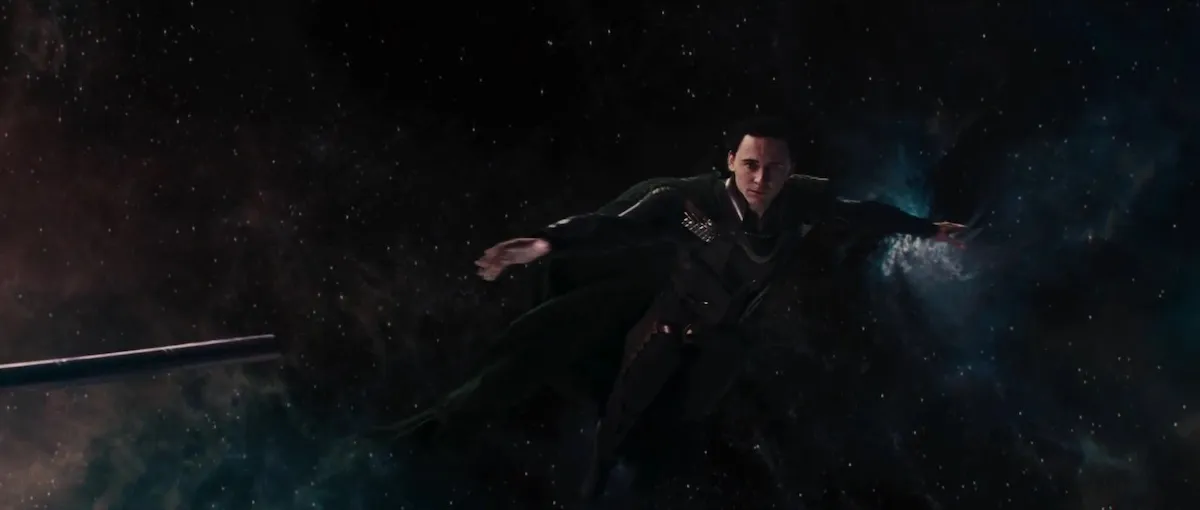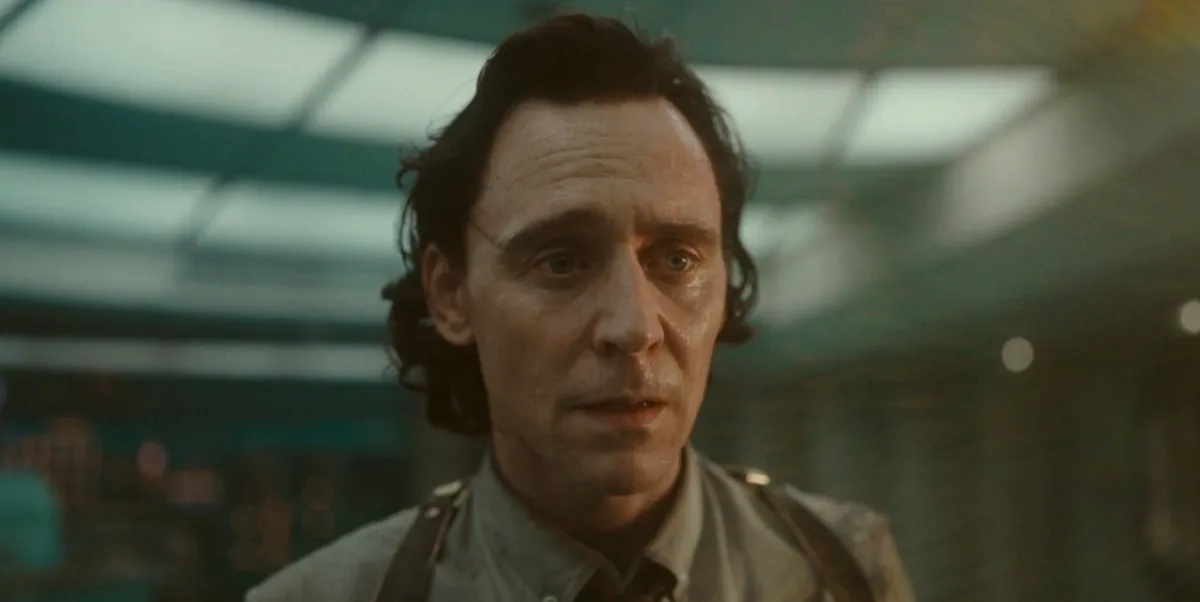**Content warning: This article includes discussion of suicide and suicidal ideation**
The Loki season 2 premiere, “Ouroboros,” has a lot of chaos and mayhem, between Loki’s uncontrollable time slipping and the impending meltdown of the Temporal Loom. The episode also has some poignant emotional beats. One moment in particular gives us a glimpse into how far Loki has come since his days of brooding and scheming on Asgard.
Spoilers for Loki season 2 episode 1 ahead!
To recap: After talking to O.B., Loki and Mobius find out that there’s only one way to stop Loki from time slipping. Mobius has to attach a temporal aura extractor to the loom, while Loki prunes himself with a time stick. The plan could reconstitute Loki safe and sound, or it could erase him from existence, killing him instantly.
Loki hates the plan from the start, but his emotions really ramp up when they reach the observation room overlooking the Temporal Loom. O.B. tells Loki that it’s time to prune himself. Like, now. Right now.
It turns out that by “now,” O.B. means in a few minutes, but the moment still gives us a surprising look at Loki’s state of mind.
Loki doesn’t want to die—and that’s significant
Thanks to Tom Hiddleston’s acting skills, the look on Loki’s face when O.B. tells him to prune himself is unforgettable. Loki tries to hide it, but he’s clearly terrified. And wouldn’t you be? It’s one thing to go into a dangerous situation, like a battle, knowing that you’ll have to work very hard to stay alive. It’s quite another to stare down what might be the last few seconds of your life.
It’s a testament to Loki’s nerves of steel that he still grabs the time stick and turns it on himself before O.B. stops him. But there’s another layer to this scene that longtime Loki fans may appreciate.
To understand that layer, we have to go back to Loki’s debut in Thor. Loki learns he’s actually a frost giant, a literal monster in the eyes of his people, and his world falls apart. He tries to win Odin’s love by killing the frost giant king Laufey, but Odin seems to reject him anyway. The film ends with a battle on the Bifrost, in which Loki falls off the edge, then lets go of Odin’s spear and lets himself plummet into space.

What’s going through Loki’s mind in that final moment? Does he know that he’ll survive getting sucked into the vortex below him and spit out somewhere else? It’s not 100% clear, but his choice to let go is commonly interpreted as a suicide attempt.
Anyone who’s experienced suicidal thoughts or ideation knows how bleak that mindset is. The future feels like a brick wall instead of an open path. Being conscious and aware feels too exhausting to handle anymore. Many people at risk of suicide don’t actually want to die—they just want relief from thoughts and feelings that are overwhelming. It’s easy to see how Loki would find himself in that headspace in Thor. After all, his whole reality has crumbled. In that moment, he can’t see any other way out.
It’s worth remembering that that experience is still relatively fresh to Loki in Loki season 2. It’s not clear how much time has passed since he arrived at the Time Variance Authority, but prior to that, only two years passed between the end of Thor and the beginning of The Avengers. Plus, Loki spent those two years surviving Thanos. He’s been through a serious rough patch.
With all this backstory in mind, Loki’s desire not to die in the Loki season 2 premiere is more than just his preservation instincts kicking in. It’s also a reminder of how far he’s come. Earlier in the episode, when he and Mobius are bickering over whether it’s worse to get your skin peeled off or to be violently ripped out of time and space, Loki cries, “Well, at least you get to live!” After everything Loki’s been through, he wants to live—thanks, in no small part, to his newfound bond with Mobius and his knowledge that he can do good in the world. When you think about it, that’s pretty powerful.
The National Suicide Prevention Lifeline is a hotline for individuals in crisis or for those looking to help someone else. To speak with a certified listener, call 1-800-273-8255.
Crisis Text Line is a texting service for emotional crisis support. To speak with a trained listener, text HELLO to 741741. It is free, available 24/7, and confidential.
(featured image: Disney+)










Published: Oct 9, 2023 09:00 am